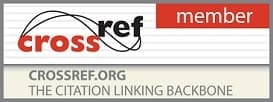- Printed Journal
- Indexed Journal
- Refereed Journal
- Peer Reviewed Journal
P-ISSN: 2394-1685 | E-ISSN: 2394-1693 | CODEN: IJPEJB
Impact Factor (RJIF): 5.38
2017, Vol. 4, Issue 3, Part C
The health promoting behaviors of physical education and sports teachers candidates
Author(s): Selçuk Gençay
Abstract:
This research was carried out to determine the health-promoting behaviors of physical education and sports teaching candidates. At this study, the health-promoting behaviors scale ıı (HPLP II) has been applied to a total of 135 teacher candidates, of which 64 were females and 71 were males. After specifying the arithmetical averages and frequency distributions of the data, the independent samples t-test has been applied in order to determine whether there are any differences between the health-promoting behaviors (HPLP) II scale scores of the students from the gender variable. In order to test the relation between the students’ income, sport level and grade with their HPLP II scale scores, the pearson correlation analysis has been carried out. In the statistical comparisons meaningfulness at alpha 0.05 and 0.01 level has been searched. According to the results of the ındependent samples t-test, there was no statistically significant difference at the all health promoting behaviors of male and female students (p>0.05), but according to gender, there was statistically significant difference, at exercise behaviors subscale (p<0.05). In this study, in the medium level, there was pozitive correlation between health promoting behaviors level, income and level of participation in sports. The total health promoting behaviors among teacher candidates were at moderate level. In addition, of females sport participation than males was low (p<0.05). There were no differences in terms of class (p>0.05). In addition, the persons who regular engaged in sports and those with higher income levels were higher in the health-promoting behaviors (p<0.05).
Pages: 122-125 | 1315 Views 167 Downloads
Download Full Article: Click Here

How to cite this article:
Selçuk Gençay. The health promoting behaviors of physical education and sports teachers candidates. Int J Phys Educ Sports Health 2017;4(3):122-125.








 Research Journals
Research Journals